Master your fur yarn skills with tips from Crocheting
Reversible Amigurumi Projects!
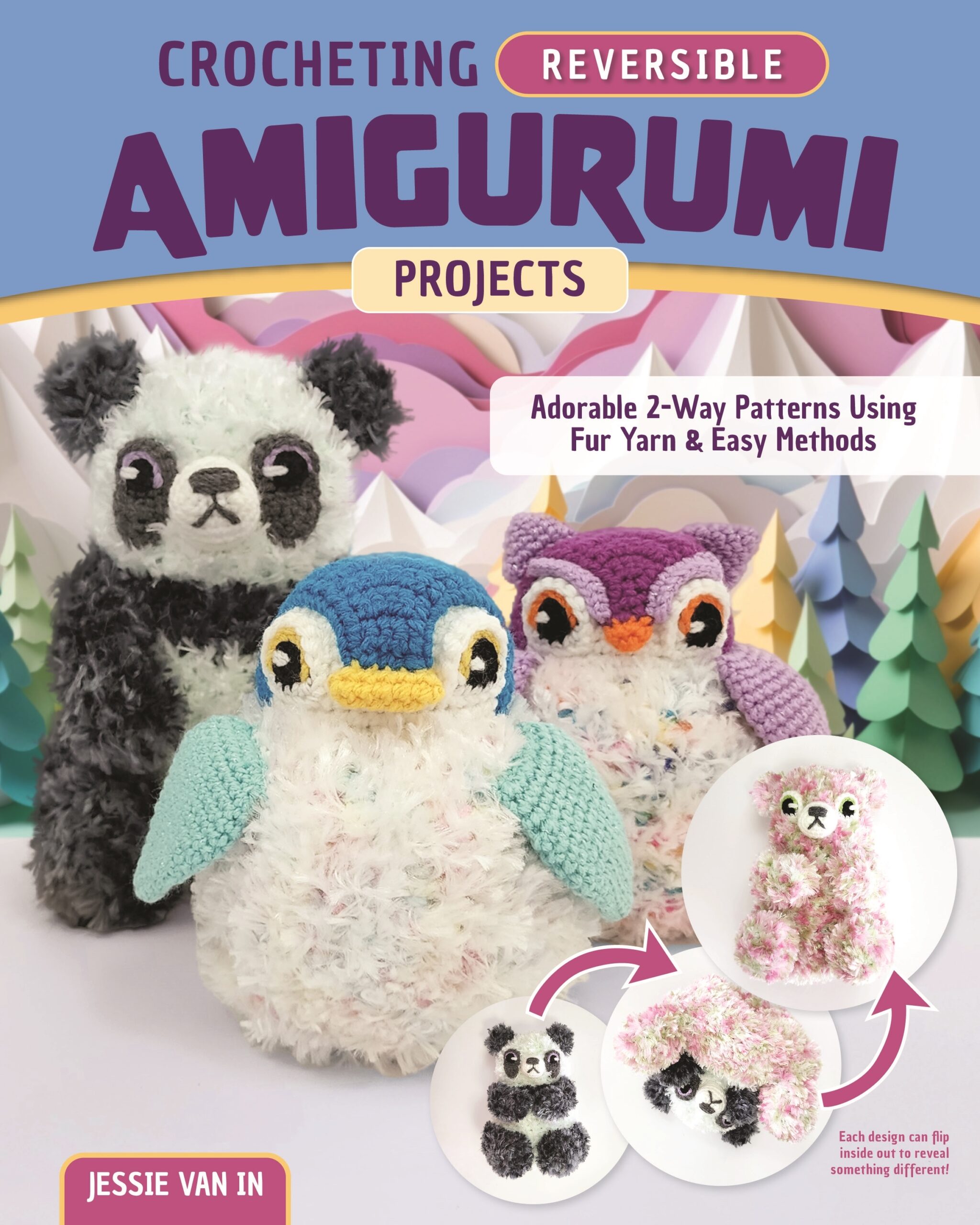
By Jessie Van In
Fur yarn can be difficult to work with at first, but the following tips for crocheting with fur yarn will make it much easier and more approachable. For a video demonstration on how to crochet with fur, visit my Projectarian YouTube channel and watch How To Crochet With Fur Yarn: Super In-Depth | Tips & Techniques. The below excerpt is from my new book (pg. 30-32), Crocheting Reversible Amigurumi Projects, which is now available to purchase!
Choose Easy Materials
Thicker, denser fur will be harder to crochet with and it will be more difficult to see your stitches. If it’s your first time crocheting with fur, or if you’ve had bad experiences that put you off in the past, consider starting with medium to fine fur yarn. When you’re choosing a fur yarn, keep in mind that the shorter the pile, the less it will conceal large gaps between the stitches.
Pair Your Fur Yarn with a Plain Yarn
The patterns in this book direct you to pair your fur yarn with double knit (DK) yarn and crochet while holding both threads together. It is much easier to hook furry yarn when working with double strands. Pairing fur yarn with smooth yarn also fattens some of the fur fibers, pushing them out of the way to make your stitches more visible without losing the furry effect.
Safety Note: The fur fibers can be plucked away from/out of the yarn, so furry amigurumi figures should only be given to children aged three or older.
 Use a Large Hook
Use a Large Hook
Amigurumi is usually crocheted with a small hook to make tight stitches and firm pieces. However, the patterns in my book all use larger hooks when crocheting with fur. Fur is thick and adding a second strand of smooth yarn makes it even thicker, so a large hook is necessary for comfortable crocheting. Large stitches are also easier to count and crochet into, and any gaps between the stitches will be hidden by the fur fibers. You can count stitches, rows, and rounds by poking your fingers into these gaps.
Maintain Even Tension
No matter what hook you decide to use, try to avoid crocheting very tightly as this will make your stitches harder to count and crochet into.
Don’t Worry About Perfection
Although fur yarn will conceal any fancy details in your work, it will also hide any small mistakes such as small gaps from skipped stitches or secret emergency decreases needed to hide having too many stitches.
Choose a Simple Design
Not only does crocheting with fur make any crochet pattern more challenging, but intricate details will be obscured by the bulky fur. The fur is the star of the show, so fine details aren’t necessary to make a project impressive. All the furry pieces in my book are simple enough to crochet easily, even with the added challenge of using fur yarn. The patterns all have a difficulty rating from 1 to 5 and are organized in order of difficulty, so you can start with the easiest project if you prefer.
 Mark the First Stitch
Mark the First Stitch
Always attach a clip-on marker to the very first stitch of a new piece and leave it in place until directed by the pattern to remove it or until the end of the project. This will help you keep track of your first row/round and make counting rows/rounds easier through the whole process. All fur pieces will be worked wrong side out because that’s the fluffier side, so as you progress through a piece, make sure the marker is clipped to the wrong side for easy identification.
Use Normal Decreases
When working with smooth yarn, use an invisible decrease by default, but when working with fur yarn, use a normal decrease.
Don’t Pull Your Magic Ring Tight
On pieces that begin with a magic ring (MR), don’t pull the MR tightly closed until directed to by the pattern. This makes it much easier to count rounds on a 3D piece – you can locate row/round 1 with ease.
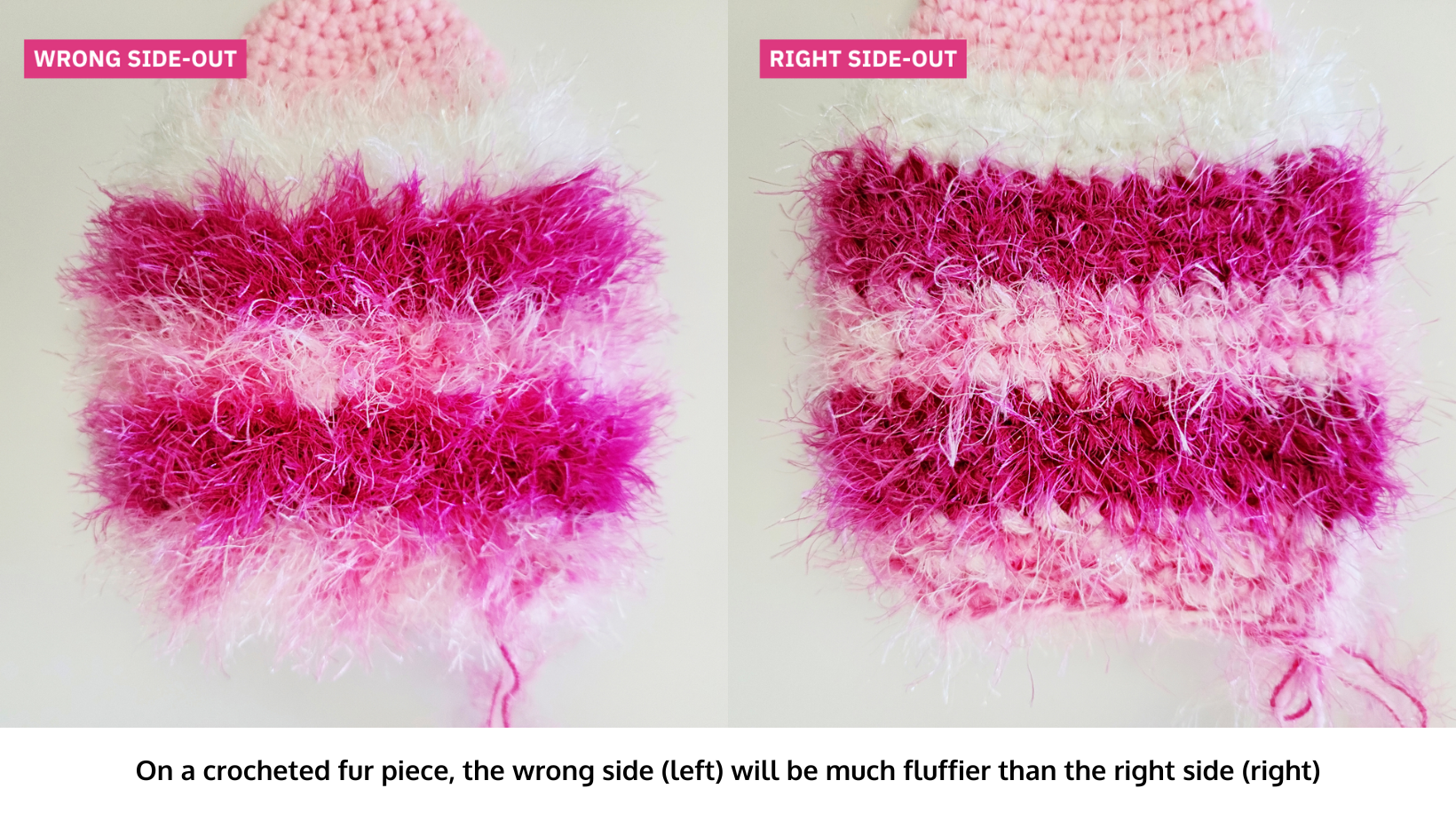
If you need to unravel, do it carefully
Pull your working yarn gently to begin unraveling it. If it gets stuck, stop immediately: pulling on stuck fur will only make a knot that’s difficult or impossible to untangle. Instead, pinch the very last stitch (that is, the one where the yarn has jammed) and pull it upward, away from the workpiece, to untangle the fibers. Wiggling it from side to side will help undo any stubborn knots. Once the fibers are free, continue pulling the working yarn gently.
Weave loose ends into smooth yarn fibers
When weaving in the loose ends of fur yarn, weave them through the fibers of your nonfur yarn to properly secure them and prevent them from coming loose with handling.
Dampen Your Yarn
Dampening your yarn will make the fur lay flat while you crochet. I don’t recommend doing this by default, but it is a helpful tip to keep in mind if you are having trouble with your yarn.
About the Author
Jessie Van In is the owner and crochet pattern designer of Projectarian where she offers instructional resources, patterns, and reversible projects that have gained worldwide attention. You can visit her website, projectarian.com, and follow her on social media, @projectarian on Instagram, Facebook, Pinterest, and YouTube.
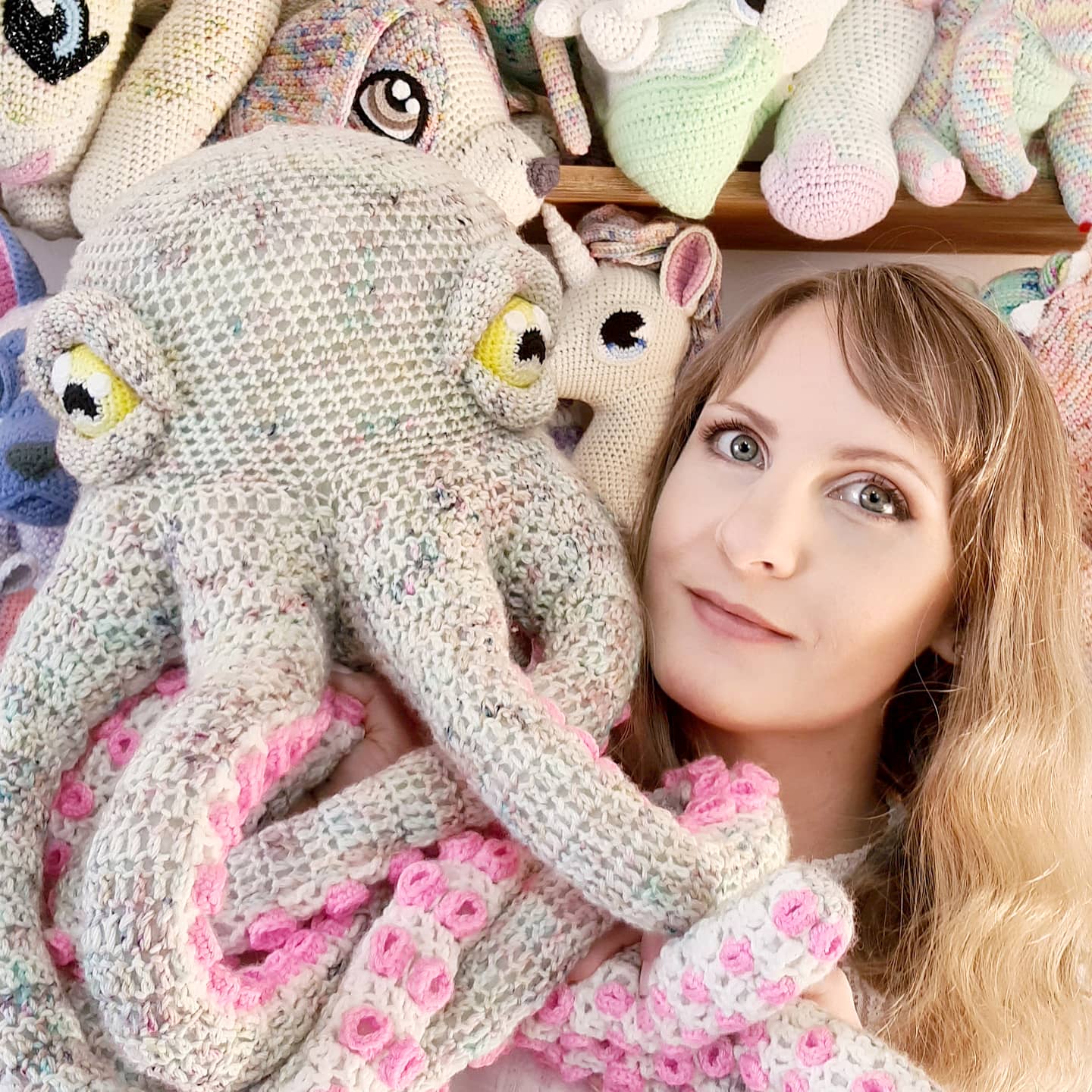


Crocheting Reversible Amigurumi Projects by Jessie Van In
Cute, clever, and fun for all, make super sweet amigurumi crochet projects that are two creations in one! Crocheting Reversible Amigurumi Projects is a delightful book of inside-out animal crochet patterns created with traditional and faux fur yarns. Filled with tips, tricks, and techniques to build your skills and ensure success for every design, this exciting guide features seven adorable amigurumi patterns that are reversible and transform into a whole new design. From a fox that becomes a cat, a snowball that becomes a penguin, otters that become a squirrel or mouse, and more, these designs are truly one-of-a-kind and offer something special to the craft of amigurumi crochet. Opening with guidance on tools, yarns, and other necessities, also included are technique tutorials for working with faux fur, making a practice piece, counting rows and stitches, and fixing mistakes.


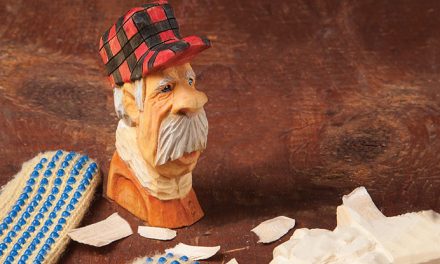
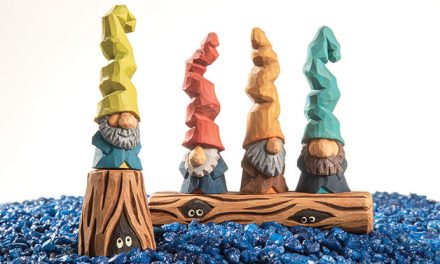
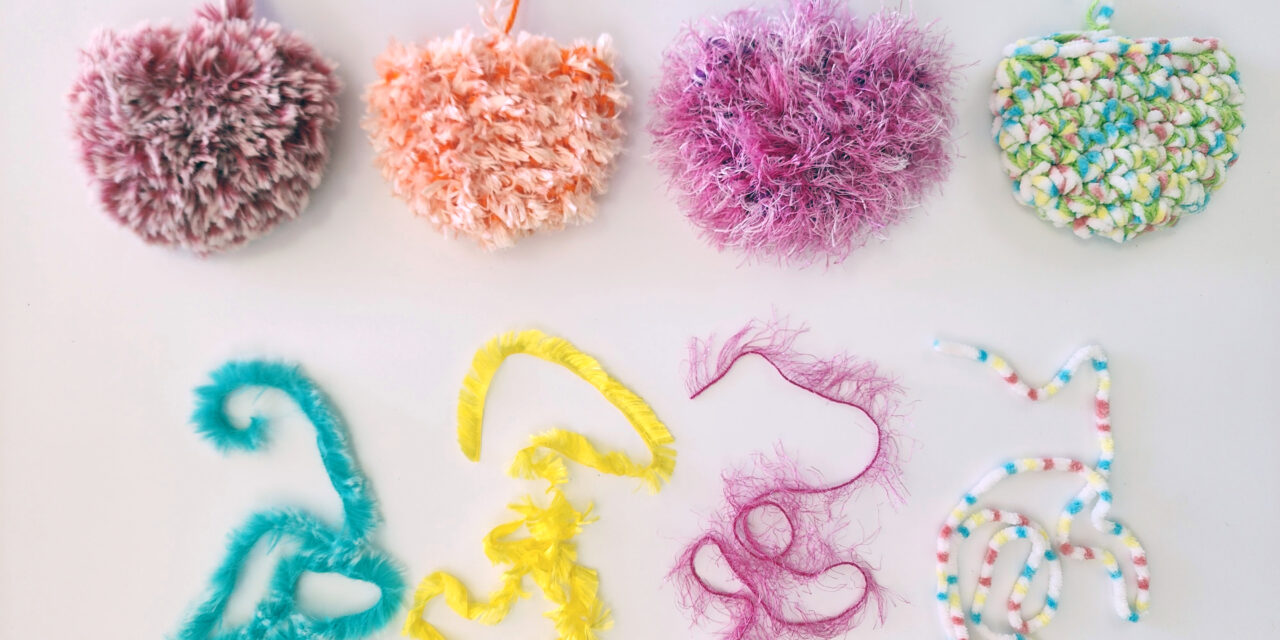

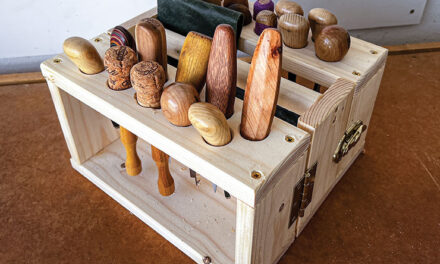

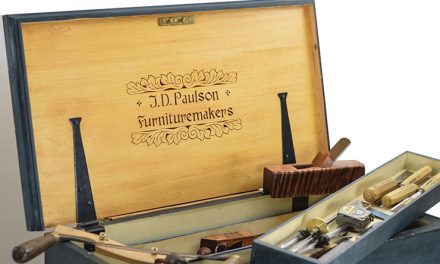
Recent Comments